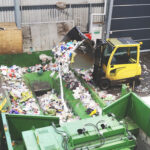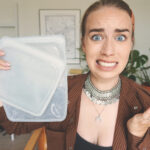In a 2001 study from the UK, 5 types of detergents were analysed via a cradle-to-grave LCA. The products were regular powder, compact powder, powder tablet, compact liquid, and liquid unit-dose system. The LCA represents 1 wash utilised average UK wash habits and infrastructure. Under the study’s conditions, it is concluded that compact detergents (both powder & liquid) are environmentally preferable detergent formulations, mainly due to the lower use of chemicals, resulting in benefits on aquatic toxicity, eutrophication, ozone depletion and photochemical smog. Less pronounced benefits for CP and CL are also observed on energy requirements and on impact categories such as acidification, human toxicity and climate change. A main finding in the study concerned user habits, the study found that the outcome is dominated by consumer contribution, so how consumers use the products, and which washing machine and programme is used. This accounts for 70% of the impact The study found that there were no significant differences are observed between scenarios using different laundry products.
Just going to leave that here, if you’re thinking about packaging for liquid detergents as well. A 2020 study from Canada compared the impact of liquid detergent in a HDPE pourable bottle, a PET container with pods, and flexible pouch with pods. This cradle-to-grave LCA included material production, intermediate processes, transportation, and end-of-life phases of each packaging system. The results showed that the conventional pourable bottle made of high-density (HDPE) had less environmental impact than the other two packaging systems in all impact categories, except ecotoxicity, due to the higher amount of packaging material required to produce the pods. The rigid PET container with pods impacted the environment in all.
So what about laundry sheets?
I haven’t been able to find any studies that compare the impact of laundry sheets, to that of more conventional products. So we’ll make do with some slightly more scattered data here. The toothpaste analysis went by so smoothly because it was all there in the LCA, but we can’t always be that lucky. Laundry sheets is a fairly new invention. Dizolve Inside has a north American patent that goes back to 2010, and they are the ones that own TruEarth, making those the original sheets. For full transparency I have actually worked with TruEarth a few years ago, so I have not only tried them, I had a paid partnership. However, I haven’t been in contact with them for years, and I am under no obligation to say or do anything regarding their brand. I had a great experience with their product and it worked really well for me, but I also read about people that paid for products they never received and were ghosted by their customer service, so yeah. Anyway.
Laundry sheets in general are advertised as sustainable alternatives to conventional detergents, it is marketed as as better options than both liquid detergents and powders. The dosage is controlled, so you can’t overuse, or waste products, it is minimally packaged and completely plastic-free…. Right?
Well. Laundry sheets, every single type of laundry sheet contains something called polyvinyl alcohol, or PVA, and that has caused consumers to be cautious when making the switch. So let’s take a look at how sustainable these laundry sheets actually are.
What is PVA?
Polyvinyl alcohol (PVA) is a water-soluble synthetic polymer, and it has various applications, from glue to medications to food packaging to pods. PVA has increased in use over the last few years due to its ability to be sturdy yet water-soluble, making individually wrapped consumer products easy to produce. PVA is approved safe by the FDA for food packaging and has biomedical and pharmaceutical applications as well.
Sorry, but I am going to get technical now, however, it feels necessary, as I often see and hear confusion on this subject. When we hear “poly”, like “polyvinyl alcohol”, more commonly known as polyester, or polyethylene, we think of plastic. And technically these all belong to the same family. “Plastic” is made from synthetic polymers, which is why the prefix “poly” is used as descriptive for materials in this family. “Poly” simply means “many-sided” and refers to the structure of the collection of molecules that make up these materials. Because of this PVA is technically a plastic, but that doesn’t mean that it reacts identically to polyester or PET.
Now you don’t hear “polymer” and instantly think “biodegradable”, it takes plastic bags hundreds of years to break down, and even then they become smaller and smaller bits of plastic. This microplastic has been found in human bodies on all continents of the world, so at this point, it is pretty safe to say that plastic doesn’t break down in a similar fashion to organic waste.

Does PVA become microplastic?
However, PVA does break down, under the right conditions. There are 55 organisms that are able to break down PVA into carbon dioxide and water, and these organisms are often present in wastewater facilities. This isn’t a new invention per se, microorganisms are often added to make biodegradable plastic break down faster, but the gist is whether or not PVA is able to break down entirely is up to the organisms present.
A 2021 study found that while it is likely that water-soluble ingredients like polyvinyl alcohol may persist in the environment, that study found little to no traces of actual PVA, and as such, didn’t leave behind micro, or nano-sized plastic particles. Bear in mind though that this study shows the potential of PVA under the right conditions, and that isn’t necessarily the same as what will happen when actual consumers use them.
A study published in the International Journal of Environmental Research and Public Health shows that in the US, around 75% of PVA end up untreated in the environment because wastewater management facilities are designed to handle human waste, not treat PVA directly. This PVA doesn’t only come from laundry sheets, just FYI, it comes from all uses of PVA, a frequent one in the same category being detergent pods. This means that in the US more than 8000 tons of PVA solvents end up in the environment every year. It is unknown what happens to the PVA in areas where it doesn’t break down, for instance in colder areas where the population of organisms and bacteria is lower.
One of the researchers from that study said this: “A lot of companies are claiming that PVA is biodegradable. It’s not fully degrading,” Rolsky said. “And there really isn’t any literature or research on PVA as a pollutant. We know it’s out there, but we don’t know whether it’s causing harm. We know it can sequester heavy metals and leach into groundwater. It can also alter gas exchanges, which can affect aquatic ecosystems, and we know that ethylene, a byproduct of PVA, is a hormone that plants utilize. It’s important that we study this further.”
This doesn’t mean that the previous study is wrong, or that it is wrong when companies that sell detergent pods, or laundry sheets say that their products are “biodegradable”. They still are. We just have to read the fine print that reads: “under the right conditions”, and unfortunately, most companies are not very good at being upfront about the terms and conditions that come with their products, and more importantly what happens when these conditions are left unmet. These companies can claim that their product is biodegradable because they *can* biodegrade, but that does not mean that they will.
Emma Dendler from The Simple Environmentalist has been doing god’s work. She reached out to several brands to hear what they knew about PVA, and what the effects of it are in their products. She writes that while some brands were open to a conversation, others dodged her questions. That was the case when she asked TruEarth about their use of PVA. It seems that a lot of companies, including TruEarth prefer to not talk about PVA. And honestly, something it seems like they don’t know a whole lot about. Now I am no expert, but I am able to spot bullshit when I see it.
A lot of companies that sell laundry sheets have some variation of this statement on their page: “Yes our products contain PVA, and yes it is technically plastic, but hey, everyone is using it, and other companies are way worse than we are”. I don’t know, but shouldn’t a company be able to explain the impact of their ingredients more thoroughly? I have yet to see any brand explain the conditions under which PVA breaks down, and some seem to refuse to even call it a type of plastic for marketing purposes.
So what’s the most sustainable option?
If we are to take anything from the first study I mentioned it is that how we wash tends to have a bigger impact than what we wash with. 70% of the impact comes from washing habits, program settings, and what machine you’re using. So just like with the conclusion from the toothpaste video, there isn’t a perfect product that magically makes your whole laundry routine carbon neutral, but, and this is a good thing, there are many small habits and routines we can improve to lower the emissions of our laundry.
Sustainable laundry habits:
- Washing in cold water reduces the impact by 10%, according to Colorado State University, moreover, most modern detergents are designed to be just as effective in cold water.
- Air-drying your laundry rather than using a tumble dryer reduces the impact by up to 67%.
- Tumble-drying clothes can account for up to 75% of the laundry’s total carbon footprint.
- Wash only full loads
- Turn your clothes inside out to protect the garments, their colour, and the details on the clothes, so they won’t get snagged.
- Some clothes do not need washing after 1 wear, while socks and underwear need frequent washing, shirts, trousers, dressed, etc can often just be aired out overnight to feel fresh the next day.
My personal choice
- So are these sheets this one-way ticket to a sustainable laundry routine? No. While I have used laundry sheets for a while, I didn’t rebuy them the last time I was out, instead, I opted for a powder detergent in a cardboard box, this is also plastic-free, and a much cheaper and more easily accessible option. I have yet to see these laundry sheet companies communicate the issues for their products in a trustworthy way, it either feels like they don’t actually know anything about PVA or they actively avoid talking about it, and since I can’t really be sure if the components are going to break down with my wastewater, I have become hesitant to restock them for now. But I’ll keep myself updated on what these companies are saying and if any advancements are being made in the future.





